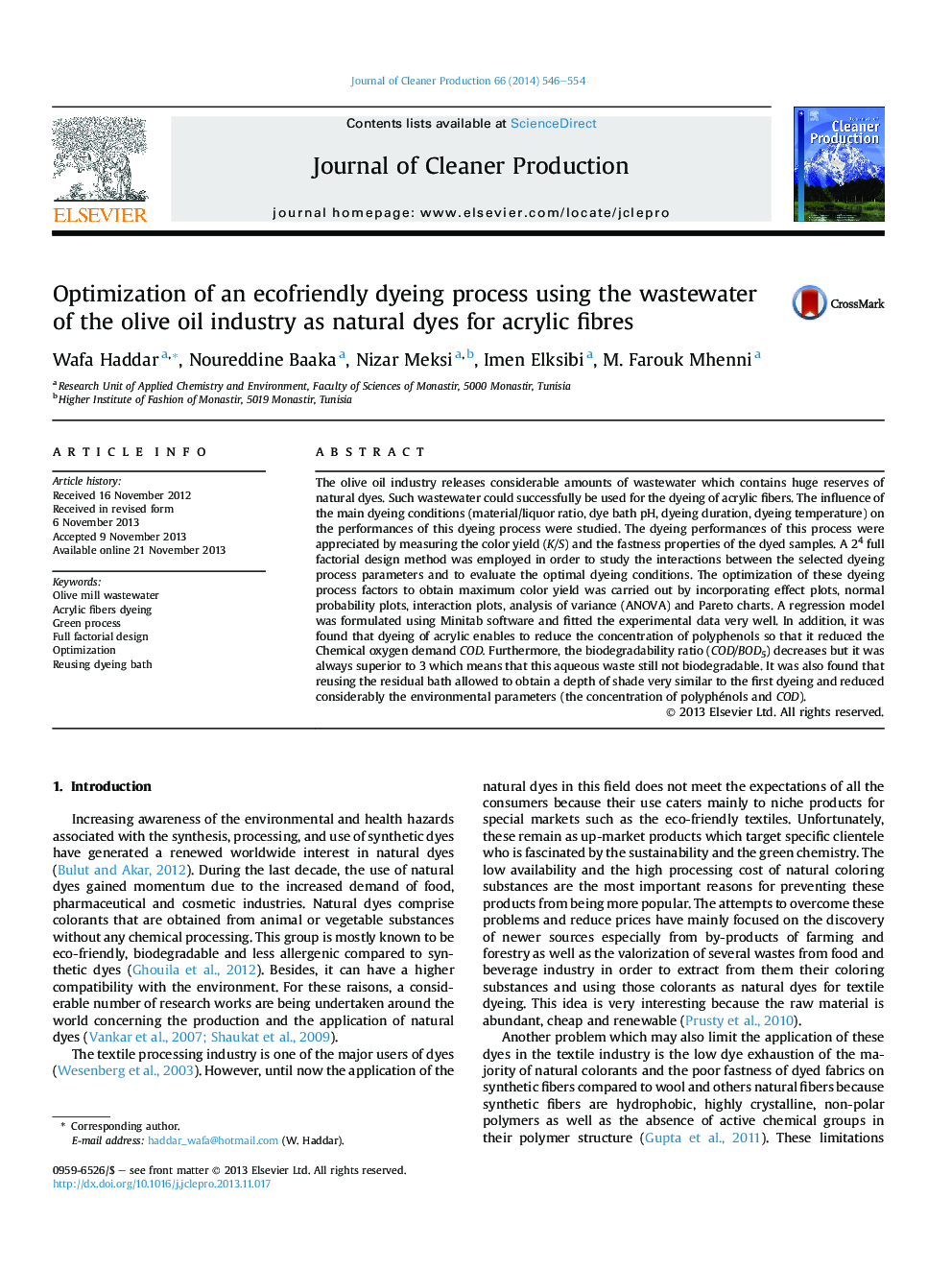| کد مقاله | کد نشریه | سال انتشار | مقاله انگلیسی | نسخه تمام متن |
|---|---|---|---|---|
| 1745022 | 1522180 | 2014 | 9 صفحه PDF | دانلود رایگان |
• Olive Mill Wastewater (OMW) contains huge reserves of natural dyes not exploited.
• Green dyeing process was developed to color acrylic fabrics by this natural dyes.
• Full factorial design was used to obtain optimal dyeing conditions.
• Brownish green shades were obtained with good color fastness properties.
• Process contributing to decrease the pollution generated by OMW effluent.
The olive oil industry releases considerable amounts of wastewater which contains huge reserves of natural dyes. Such wastewater could successfully be used for the dyeing of acrylic fibers. The influence of the main dyeing conditions (material/liquor ratio, dye bath pH, dyeing duration, dyeing temperature) on the performances of this dyeing process were studied. The dyeing performances of this process were appreciated by measuring the color yield (K/S) and the fastness properties of the dyed samples. A 24 full factorial design method was employed in order to study the interactions between the selected dyeing process parameters and to evaluate the optimal dyeing conditions. The optimization of these dyeing process factors to obtain maximum color yield was carried out by incorporating effect plots, normal probability plots, interaction plots, analysis of variance (ANOVA) and Pareto charts. A regression model was formulated using Minitab software and fitted the experimental data very well. In addition, it was found that dyeing of acrylic enables to reduce the concentration of polyphenols so that it reduced the Chemical oxygen demand COD. Furthermore, the biodegradability ratio (COD/BOD5) decreases but it was always superior to 3 which means that this aqueous waste still not biodegradable. It was also found that reusing the residual bath allowed to obtain a depth of shade very similar to the first dyeing and reduced considerably the environmental parameters (the concentration of polyphénols and COD).
Journal: Journal of Cleaner Production - Volume 66, 1 March 2014, Pages 546–554
